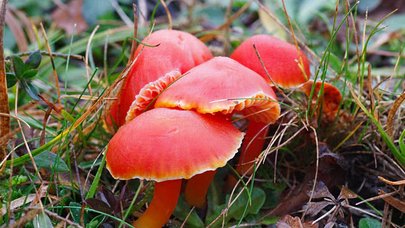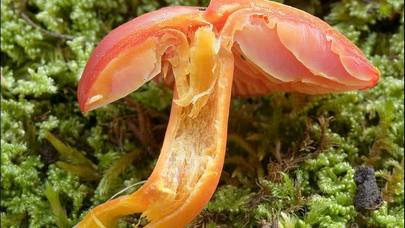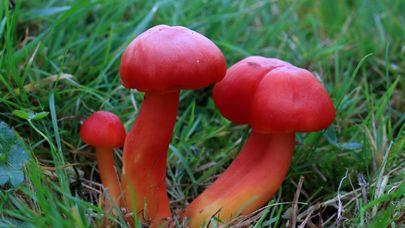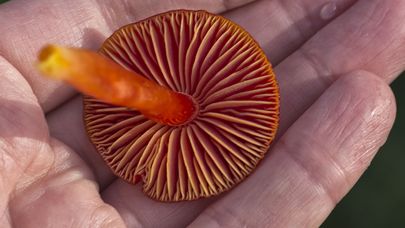Hygrocybe coccinea
Description
This mushroom is one of the smaller red waxcaps, can grow in large numbers in the right conditions, and can be more gregarious than other red waxcaps and can be found in several different environments. Being fairly rare though and small this beautiful mushroom, although edible, is better to admire and photograph than to pick for any reason unless found in very large numbers.
This colorful member of the mushroom genus Hygrocybe. These waxcaps are found across the Northern Hemisphere from China and Japan to Europe and North America. The small bright red mushroom is a familiar sight in unimproved grasslands in Europe in late summer and autumn, and woodlands in North America in winter.
Common names: Scarlet Waxcap, Scarlet Hood, Righteous Red Waxy Cap.
Mushroom Identification
Pileus
Cap 2.5-5.0 cm broad, conic, becoming obtuse conic, with or without an umbo, occasionally expanding to convex or nearly plane; margin at first incurved, decurved to plane at maturity, sometimes faintly striate; surface glabrous, moist to lubricous, scarlet-red, fainter towards the margin; context up to 5.0 mm thick, soft, colored like the cap surface; odor not distinctive; taste mild.
Lamellae
Gills adnexed to notched with a descending tooth, subdistant, relatively broad and thick with a waxy aspect, intervenose, yellowish-orange, to reddish-orange, edges lighter than the faces, lamellulae up to four-seried.
Stipe
Stipe 2.5-5.5 cm long, 0.5-1.0 cm thick, equal, straight to wavy, fragile, hollow, round or flattened with a groove; surface typically glabrous, only occasionally striate, moist, not viscid, colored like the cap, i.e. reddish-orange to yellowish-orange, yellowish at the base; partial veil absent.
Spores
Spores 7.0-9.5 x 4.0-5.0 µm, ellipsoid, smooth, inamyloid; spores white in the deposit.
Habitat
Scattered or in small groups in mixed hardwood-conifer forests; fruiting from mid-winter to early spring.
History
Originally described in 1762 by Jacob Christian Schaeffer, who named it Agaricus coccineus, the Scarlet Waxcap was relocated to its present genus in 1871 by the famous German mycologist Paul Kummer. (Prior to Kummer's work the vast majority of gilled fungi were simply recorded as Agaricus species.)
Synonyms of Hygrocybe coccinea include Agaricus coccineus Schaeff., and Hygrophorus coccineus (Schaeff.) Fr.
The genus Hygrocybe is so named because fungi in this group are always very moist. Hygrocybe means 'watery head'. As is the case with the food coloring 'cochineal', the specific epithet coccinea means 'bright red', and the fresh young mushrooms showed on the left provide all the evidence needed to justify this description.
Photo sources:
Photo 1 - Author: Lukas from London, England (CC BY-SA 2.0)
Photo 2 - Author: GLJIVARSKO DRUSTVO NIS from Serbia (CC BY-SA 2.0)
Photo 3 - Author: amadej trnkoczy (amadej) (CC BY-SA 3.0)
Photo 4 - Author: Stu's Images (CC BY-SA 4.0)
Photo 5 - Author: AJC1 from UK (CC BY-SA 2.0)





